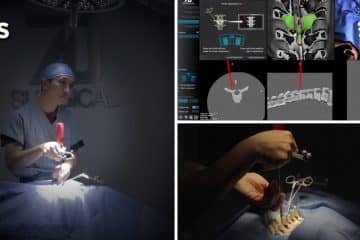In the latest sign that digital innovations are changing the way we learn, anatomy students at a university in Australia are using augmented and virtual reality.
The pilot of the technology is being used to help boost spatial awareness, accessibility and explorative learning, La Trobe University said in an announcement Monday.
According to Aaron McDonald, La Trobe’s head of the anatomy discipline, augmented reality (AR) offered students 24-hour access to three-dimensional anatomy images through their phones, computers or iPad. On campus, headsets are used to provide access to virtual reality technology.
“Augmented reality allows students to visualize and manipulate anatomical structures and develop a deep understanding,” McDonald said. “You can superimpose anatomical structures over a peer who can perform movements along with the app, to better understand muscle function,” he added. “It is a great resource for both team work and self-directed learning.”
The university said that, in terms of cost, the use of AR technology amounted to 10 Australian dollars ($6.74) per student compared to over 100 Australian dollars for just one textbook.
Technology is driving change across the education sector, with computers and tablets now a common site in classrooms and libraries around the world. The last few years have also seen the development of digital based learning platforms including massive open online courses, or MOOCS.
Providers such as edX — which was founded by Harvard University and the Massachusetts Institute of Technology in 2012 — offer free online courses from renowned institutions such as Columbia University and Delft University of Technology in the Netherlands. The platform provides more than 2,400 courses and its users come from all over the world.
In July this year education publisher Pearson announced that all new releases of its 1,500 active U.S. titles would be “digital first.” The company said the titles would be updated on a continuous basis “driven by developments in the field of study, new technologies, such as artificial intelligence, data analytics, and Pearson’s own efficacy research.”
More: Types of Hip Fractures


